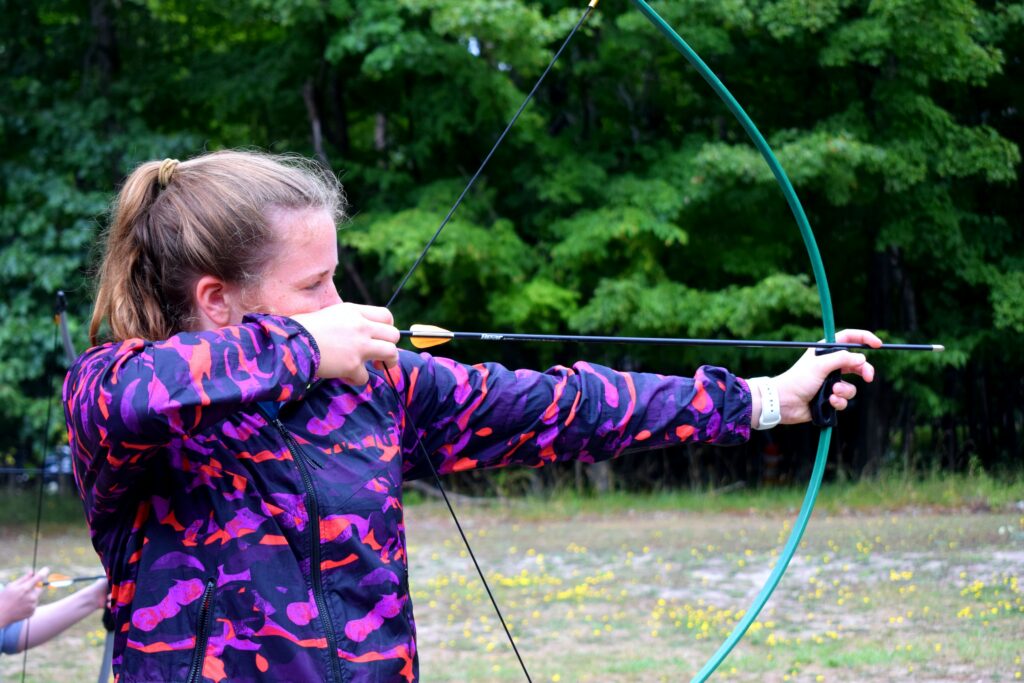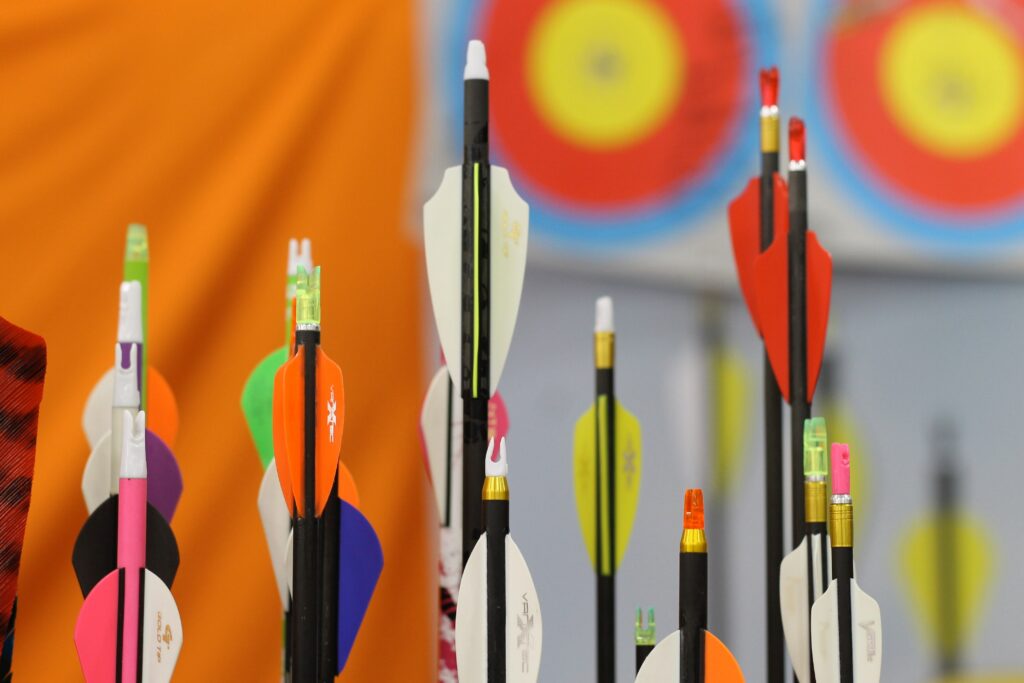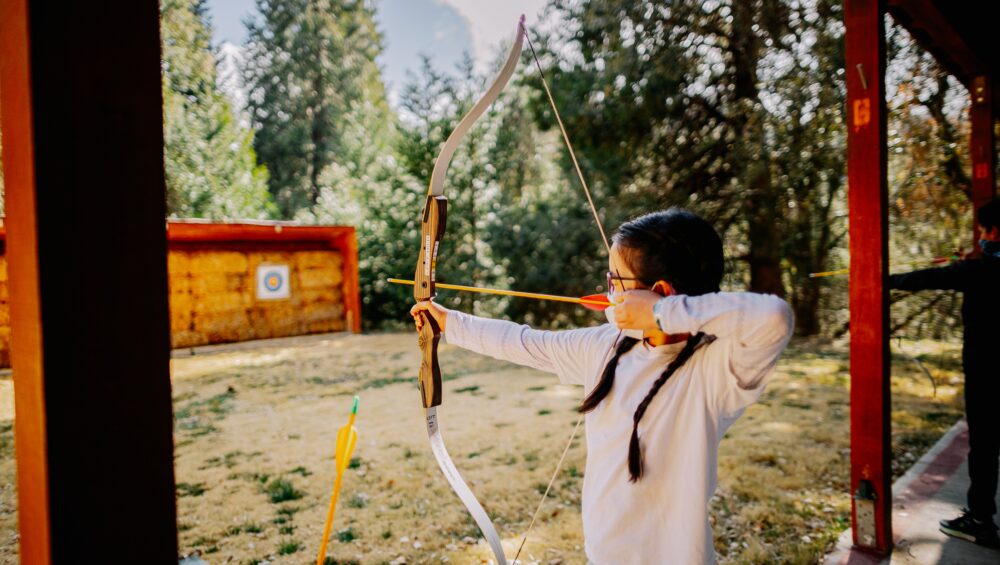Have you ever dreamt of riding horseback, firing arrows off to pin apples to the trees behind your target?
You’re not alone in the fantasy of becoming Legolas, Robin Hood, or the Green Arrow. We all watch these movies and shows and imagine what it would be like to have the skills that these legends have developed over time.
One wildly misleading part of these archery depictions is the lack of intense training over years and years that one needs to become a professional. There was someone training baby Legolas and giving him archery tips as he missed his target repeatedly. We all have to start somewhere.
Archery is a great sport to get into as a beginner. There isn’t a huge initial investment, it’s easily accessible, and you don’t need a ton of gear to try it out. There are shooting ranges all around that will gladly let you explore the bow and arrow, even as a beginning archer. While the internet and other resources around you are filled with a wealth of archery tips, we’re going to dive into the best way to get started on your new journey.
So, nock your arrow, take sight, and let’s see what targets we can hit.
Broadmoor Outfitter’s Beginners Guide to Archery

Bows
It can’t be said enough that archery is a simple sport at its roots. There aren’t too many moving parts, and you don’t have complicated technology. It’s a tool that people have been using for thousands of years, way before we relied on smartphones to do everything for us.
Now, you can easily Google, “What is archery?” and have your answer in an instant. Still, the bow takes time to practice, learn, and truly master. Fortunately, archery for beginners is much more simple than mastering it.
You can’t practice archery without is the bow. This may be common knowledge, and you may be sitting there saying, “Duh, of course, you need a bow,” but there’s a little more to it. There are several styles of bow, and each has pros and cons.
So, to get you started on the right foot, here are the two basic designs of bows.
1. Recurve
A recurve bow is the simpler of the two bow styles. In essence, this bow style utilizes the curve of fiberglass, or sometimes wood, limbs to provide power to your shot. These limbs are attached to a handle that houses the arrow rest, where you will be looking while aiming.
A single bowstring attaches these two arms and curves them against their natural direction, amping up the potential force. All of this power goes into the arrow as soon as you pull back the bowstring and take aim.
A recurve bow looks more like a traditional Robin Hood style bow and is probably what you will want to try using on your first time shooting. They aren’t complicated, they give you a good idea of how to control a bow under pressure. Plus, they are much cheaper than their counterparts.
Recurve bows are typically a relatively low draw weight that won’t make your arms shake uncontrollably while pulling back the first time. If you’re looking to do some more complex or powerful shooting, you can look towards other bow styles.
2. Compound
A compound bow is an ingenious invention that allows the shooter to hold aim without putting too much strain on their arms and shoulders. This was accomplished by engineers in the 1970s, using cams to relieve the pressure once the string is fully drawn. The bow itself is a bit more complicated, looks much more modern and high-tech, but is perfect for anyone who goes hunting and patiently waits at a full draw for the right moment to fire.
There are more traditional bows, like the longbow that you may imagine an elf carrying into war. There are bows specially designed to be fired from horseback and bows with all the bells and whistles for Olympic archers, but we’re talking about archery for beginners here.
One of the best archery tips we can give you is to start easy, don’t grab a bow that will be too high of draw weight. You will most likely end up not enjoying the sport because it’s too difficult to come near a target while straining to draw the bow.

Arrows
While there are many styles of arrows for hunting and target practice, the best idea for starting up is to buy a cheap archery target and some target arrows that are relatively affordable. A lot of these are going to be aluminum or carbon, which are great materials for beginners.
Learning how to re-fletch your arrows is another invaluable tool. The little feathers, called fletchings, are going to pop off over time. It’s an easy fix with the right glue and tools, and it’s worth getting to know how to do your own maintenance. This will save you money in the long run and keep you shooting for longer.
Shooting Sequence
As this is a beginner’s guide to archery, having the gear isn’t enough. Learning how to shoot is essential.
You’ve acquired the bow and the arrows, and hopefully, you’ve found some other safety equipment such as an armguard or finger guard. Now you’re ready to shoot! The entire shooting sequence gets down to fine, delicate details when working on becoming a master.
For now, though, we’ll glance over the basics of an archery shooting sequence:
- Find a safe area where everyone is clear of down range, mentally prepare, and it’s time to take your stance.
- With your feet shoulder-width apart, extend your bow arm towards your target.
- Nock your arrow on the bowstring and place it in the arrow rest with the index feather (normally the odd colored fletching) pointed away from you.
- Placing one finger above the arrow and two below, draw the bow back and bring your hand to the corner of your smile, all while keeping your elbow high.
- With both eyes open, take aim down the shaft of the arrow towards your target.
- Take a deep breath in, and slowly exhale.
- On your exhale, release.
- Celebrate.
Okay, maybe you won’t be celebrating the first shot, but keep at it. Learning archery is a process, and it requires a lot of patience and practice. Keep working on your form and pay attention to the little details.
Where to Practice
Since archery can be pretty dangerous, one of the safest ways to start is with a guided introduction to archery.
When beginner archery in Colorado is done right, it is a fun family activity that everyone can master. Set up a small target range at home if you have the outdoor space. If you don’t, find the closest archery range. The range is a great place to meet fellow archers who can share archery tips and are willing to build community through the sport.
Soon, you won’t need the beginner’s guide. Nocking an arrow and pinning five into the bullseye in a row will feel natural. Keep on practicing, and remember, we were all beginners at some point.

